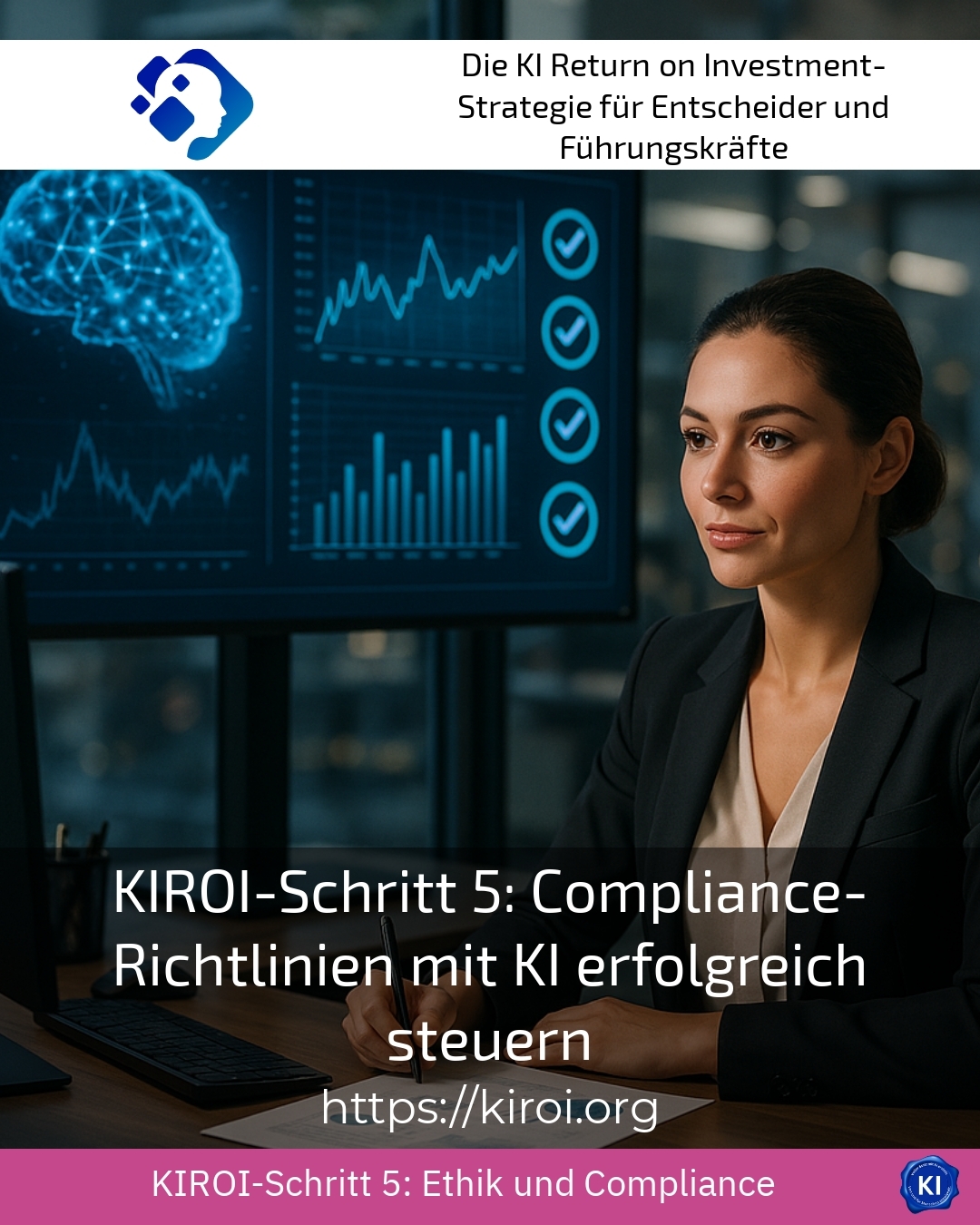Today, compliance guidelines are a central component of successful corporate management. They ensure that all activities are in line with legal requirements and internal standards. The fifth step of the KIROI method in particular focuses not only on formulating compliance guidelines, but also on supporting and optimising them in the long term. Many companies report that they are able to strengthen their compliance culture and significantly reduce risks through targeted support and digital assistance.
Compliance guidelines: Why they are so important
Compliance guidelines protect companies from legal consequences and financial losses. They define how employees should behave and which processes must be adhered to. In practice, this means that companies ensure data protection, occupational safety and fair business practices, for example. Without clear compliance guidelines, companies run the risk of breaking the law and losing trust.
Many clients come to us with the question of how they can effectively implement compliance guidelines. Especially in industries such as healthcare, retail and services, clear guidelines are crucial. For example, a hospital must ensure that all data is processed in compliance with the GDPR. A retail company must control its supply chains. And a service provider must create transparent processes for expenses and business trips.
Support compliance guidelines with AI
Modern technologies such as artificial intelligence can help to manage compliance guidelines more efficiently. AI tools analyse large amounts of data and recognise patterns that indicate potential risks. This enables a company to react to deviations at an early stage and prevent violations. The integration of AI into compliance management is particularly useful in digital processes.
A practical example: a financial services provider uses AI to automatically check transactions for irregularities. This enables suspicious activities to be recognised and reported more quickly. Another example is a logistics company that uses AI to monitor compliance with environmental regulations. And a technology company uses AI to monitor compliance with data protection guidelines in real time.
Implementing compliance guidelines in practice
The implementation of compliance guidelines requires more than just the creation of documents. It is about integrating the guidelines into everyday life and involving all employees. This includes regular training, transparent communication and the creation of an open error culture. This makes it easier for employees to report violations and find solutions together.
A large company from the service sector has successfully established compliance guidelines to prevent corruption. Targeted workshops and individual coaching sessions were organised for managers. Awareness of compliance issues increased significantly. The systematic risk analysis and regular audits ensured that offences became less frequent. Employees felt more involved and better understood the importance of compliance guidelines.
Another example is a retail company that has implemented compliance guidelines for its supply chains. Digital tools and regular training have ensured that all partners adhere to the guidelines. In the healthcare sector, data protection was supported by standardised processes and suitable technology. And in the construction industry, checklists and on-site training helped to implement safety and compliance guidelines.
Sustainably supporting compliance guidelines
Compliance guidelines are not a one-off project, but a continuous process. Companies should regularly check whether the guidelines are still up to date and whether they are being adhered to on a day-to-day basis. This includes regular audits, feedback rounds and adapting the guidelines to new legal requirements.
Another example: A technology company has introduced compliance guidelines for handling customer data. Regular training and audits ensured that all employees adhered to the guidelines. Compliance was supported and documented using digital tools. This increased customer trust and the company was able to significantly increase its legal certainty.
Another example is a financial services provider that has implemented compliance guidelines for advising customers. Regular training and feedback sessions ensured that all advisors adhered to the guidelines. Compliance was supported and documented using digital tools. This increased customer trust and the company was able to significantly increase its legal certainty.
Another example is a healthcare provider that has introduced compliance guidelines for handling patient data. Regular training and audits ensured that all employees adhered to the guidelines. Compliance was supported and documented using digital tools. This increased patient trust and the company was able to significantly increase its legal certainty.
BEST PRACTICE with one customer (name hidden due to NDA contract) A medium-sized company in the logistics sector has introduced compliance guidelines for handling sensitive data and protecting against corruption. The compliance culture was strengthened through regular training, audits and the involvement of all employees. Adherence to the guidelines was supported and documented using digital tools. This increased customer trust and the company was able to significantly increase its legal certainty. Employees felt more involved and better understood the importance of the compliance guidelines.
My analysis
Compliance guidelines are an indispensable part of modern corporate management. They protect against legal risks and strengthen the trust of stakeholders. Support through transruption coaching and the integration of AI tools can help to sustainably support and optimise compliance guidelines. Many companies report that they are able to strengthen their compliance culture and significantly reduce risks through targeted measures. The continuous monitoring and adaptation of compliance guidelines is crucial for long-term success.
Further links from the text above:
Compliance: definition and importance for companies
Mastering compliance guidelines: KIROI Step 5 for decision-makers
Explanation of terms: Compliance guidelines
5 building blocks of effective compliance management
Compliance: definition, tasks, guidelines
For more information and if you have any questions, please contact Contact us or read more blog posts on the topic Artificial intelligence here.















